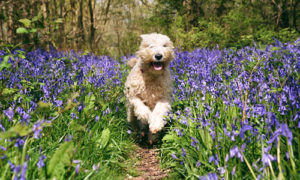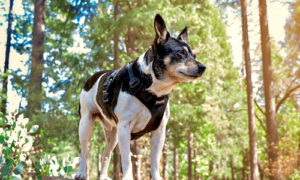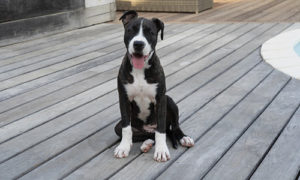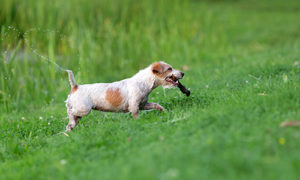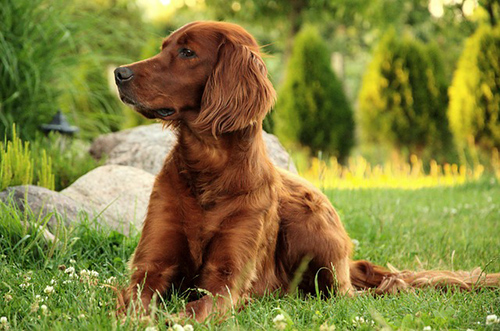
Although there is no proof, the Irish Setter is said to be a combination of the Irish Water Spaniel, Irish Terrier, Gordon Setter, English Setter, Spaniels, and Pointers. Single-color dogs were much less common than the red and white dogs, though certain Irish nobles preferred the red setters. Solid-red setters became popular in Ireland during the early 19th century and were first imported to America in the 1870s when they were called Irish Red Setters.
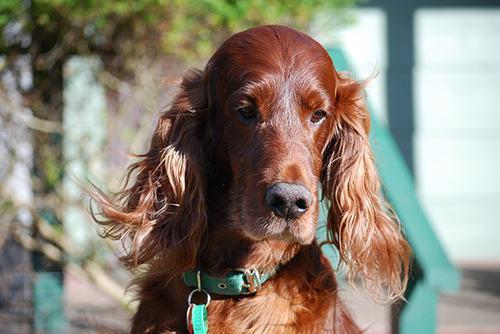
Breed Standard
This dog is a stylish, athletic gundog, famed for its glossy red coat. It is slightly longer than tall, is sturdy, and has plenty of bone. It has a long graceful, arched neck; a firm, somewhat sloping topline; a deep chest; and a long, tapered tail that is carried nearly level with the back. The long, lean head is slightly domed, with a moderately deep muzzle and a black or brown nose. The medium-sized, almond-shaped eyes give a soft, alert expression. The long, thin ears are set low and hang in neat folds close to the head.
Breed Facts
| Energy level | Watchdog ability> | ||
| Exercise requirements | Protection ability | ||
| Playfulness | Grooming requirements | ||
| Affection level | Cold tolerance | ||
| Friendliness toward dogs | Heat tolerance | ||
| Friendliness toward other pets | Friendliness toward strangers | ||
| Ease of training |
- Popularity: Slightly popular
- Family group: Gundog, Setter, Pointer
- Country developed: Ireland
- Date developed: 1700s
- Original purpose: Bird setting and retrieving
- Today’s purpose: Pointing, pointing field trials
- Other names: Red Setter
Activity level: High. Adult Irish Setters need to run daily on a lead or in a safely fenced yard.
Grooming: Brushing and combing two or three times per week is advised. You can get access to a grooming DVD from the parent club website.
Coat: The coat is moderately long and flat on the body and short and fine on the head and front of the forelegs. Long, silky feathering is present on the ears, back of the forelegs, thighs, belly, and brisket, and there is a moderately long fringe on the tail.
Color: Mahogany or chestnut red
Group: Sporting
Year recognized by the AKC: 1878
Irish Setter Temperament
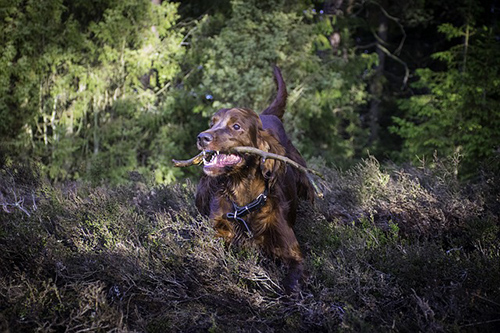
This dog is an affectionate, outgoing, sensitive breed. Irish Setters were bred to work closely with human partners, and they need plenty of companionship. Their strong instinct is matched by their desire to please. They are very trainable and easy to housetrain. Puppies mature slowly and can be unruly and sometimes stubborn until around three. Training must be consistent, patient, firm, and gentle.
The Irish Setter is an enthusiastic and tireless hunter. It approaches everything in life with an exuberant, good-natured attitude, full of enthusiasm and zeal. If deprived of ample exercise, it will be overly active and frustrated inside the home. It is a likable breed eager to please and loves participating in family activities. The dogs are excellent with children but can be a little too rowdy for more minor children.
Health
- Main concerns: PRA, CHD, gastric torsion
- Minor concerns: megaesophagus, panosteitis, HOD, osteosarcoma, hypothyroidism
- Rarely seen: OCD, epilepsy, hemophilia A, canine leukocyte adhesion deficiency (CLAD)
- Recommended tests: DNA for PRA, hip, thyroid
- Life span: 12 to 14 years
- Note: With the arrival of DNA testing for PRA, this dilemma should no longer be a worry if both parents have been tested.
- Weight: Male – about 70 pounds; Female – about 60 pounds
- Height: Male – about 27 inches; Female – about 25 inches
Breeder and Buyer’s Advice
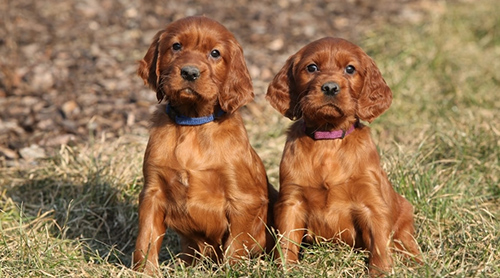
People wanting to own this breed should be prepared for an energetic dog that requires training and plenty of space to run. If possible, potential owners should attend dog shows to meet breeders and see their dogs. Make sure that the breeder you decide on is respectable, and see the puppies’ mother before deciding. Confirm that the litter is AKC registered and the parents have been screened for health disorders.
Parent club: Irish Setter Club of America, Inc. (https://irishsetterclub.org/); founded in 1891.
Regional clubs: Regional clubs are divided into four regions and are listed on the club’s website.
Rescue: The ISCA’s Irish Setter Rescue page is located on the parent club’s website.

